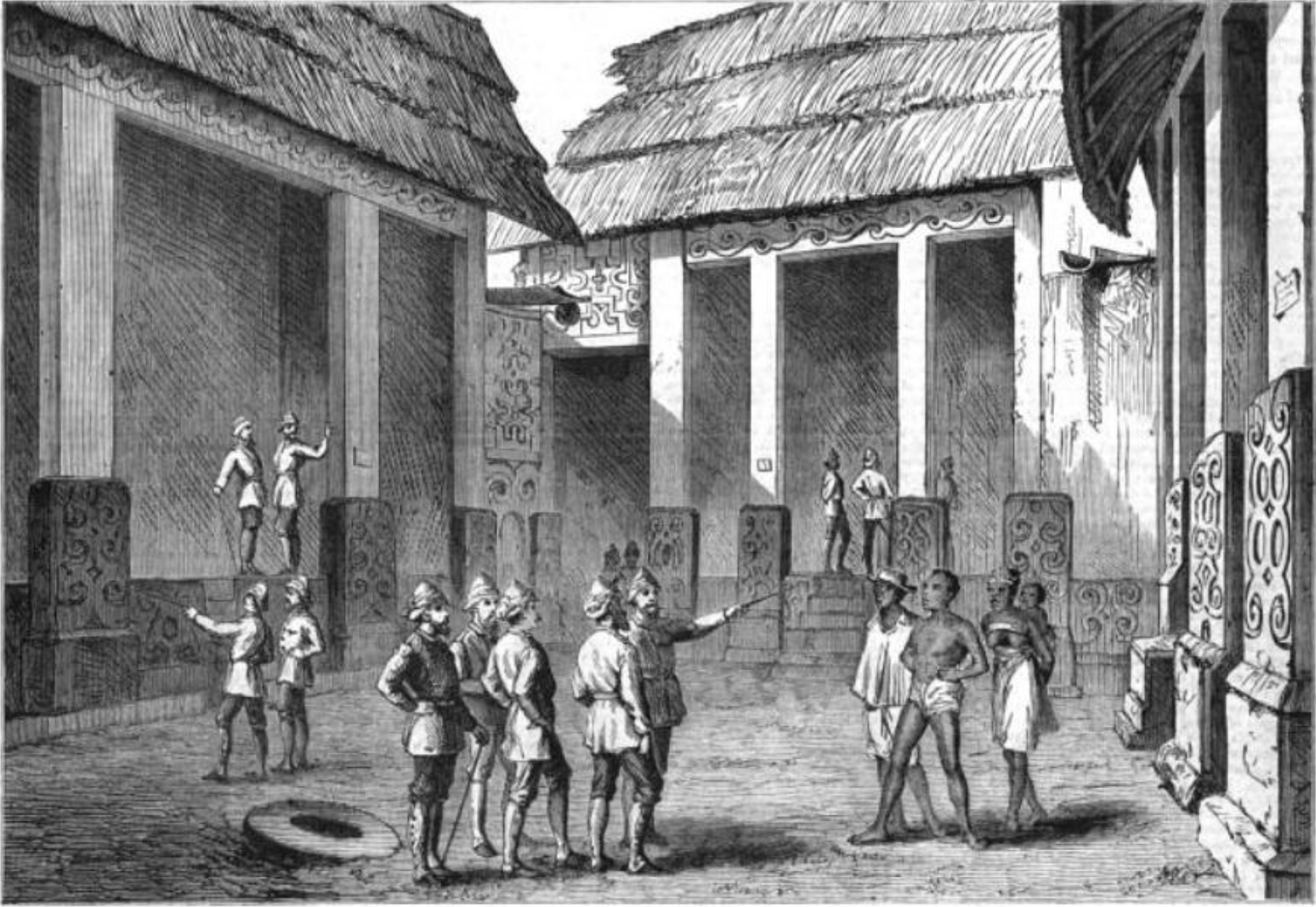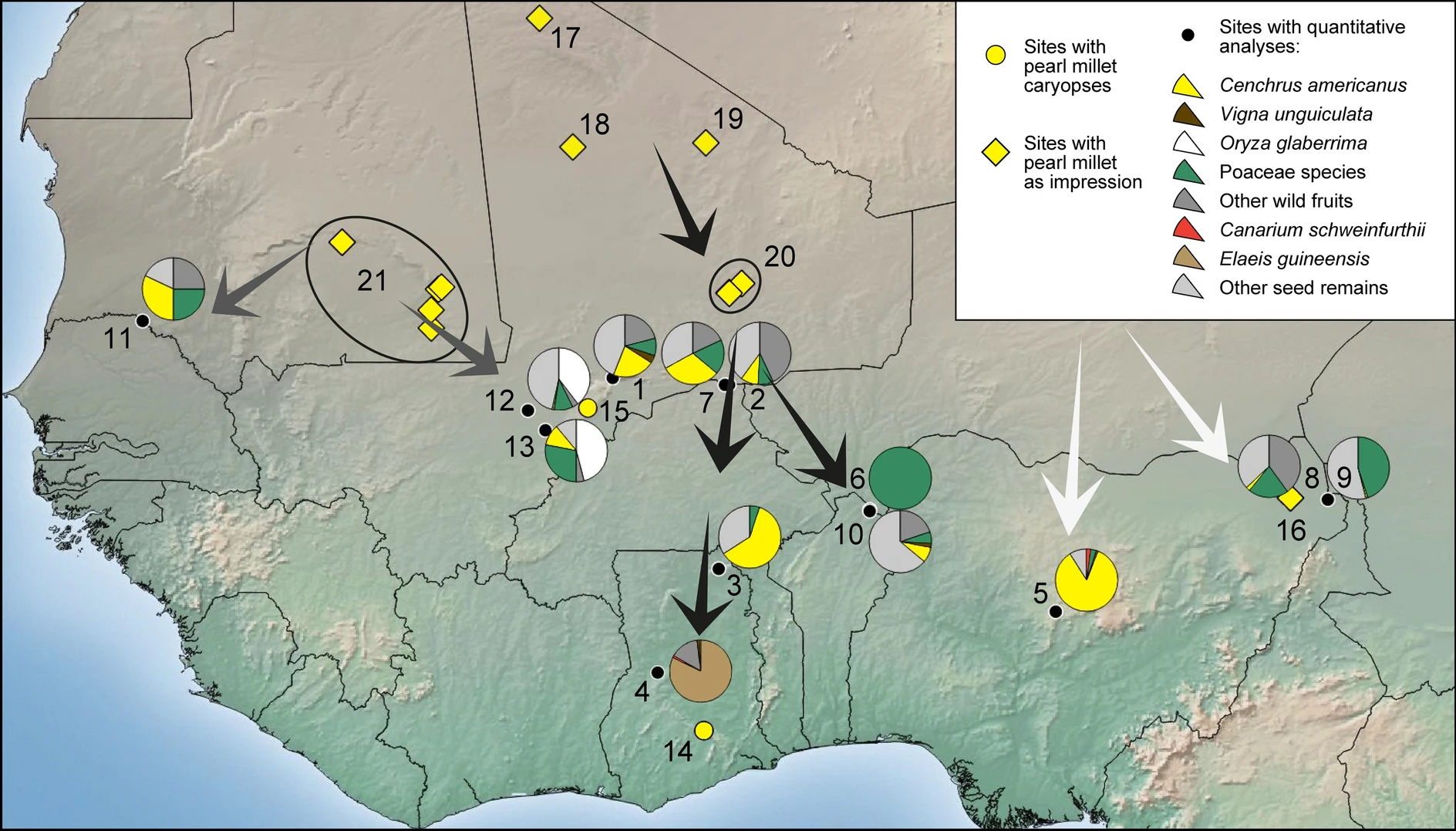|
Adanse
Adanse or Adansi is one of the earliest Akan states, located in the southern part of present-day Ashanti Region, Ghana. Widely regarded in oral tradition as a spiritual and ancestral homeland of many Akan polities, Adansi was an early center of gold production, regional trade, and clan-based governance. Traditionally considered the eldest among the five principal Akan states (''Akan Piesie Anum''), it played a foundational role in the formation of later polities such as Denkyira, Akyem, Assin, and the Asante Empire. Etymology The name Adanse derives from the Akan word ''adanseɛ'', meaning “builders”. According to F. K. Buah, the Adansi earned this name because they were the first Akan people to construct permanent homes and shrines, distinguishing them as cultural pioneers in statecraft and architecture. This interpretation is supported by Asante traditions, which remember the Adansi as “those who build houses,” emphasizing their legacy in establishing the architectura ... [...More Info...] [...Related Items...] OR: [Wikipedia] [Google] [Baidu] |
Akan People
The Akan () people are a kwa languages, Kwa group living primarily in present-day Ghana and in parts of Ivory Coast and Togo in West Africa. The Akan speak languages within the Central Tano languages, Central Tano branch of the Potou–Tano languages, Potou–Tano subfamily of the Niger–Congo languages, Niger–Congo family.''Languages of the Akan Area: Papers in Western Kwa Linguistics and on the Linguistic Geography of the Area of Ancient''. Isaac K. Chinebuah, H. Max J. Trutenau, Linguistic Circle of Accra, Basler Afrika Bibliographien, 1976, pp. 168. Subgroups of the Akan people include: the Adansi, Agona, Akuapem people, Akuapem, Akwamu, Akyem, Anyi people, Anyi, Ashanti people, Asante, Baoulé people, Baoulé, Bono people, Bono, Chakosi people, Chakosi, Fante people, Fante, Kwahu, Sefwi people, Sefwi, Wassa, Ahanta people, Ahanta, Denkyira and Nzema people, Nzema, among others. The Akan subgroups all have cultural attributes in common; most notably the tracing of royal m ... [...More Info...] [...Related Items...] OR: [Wikipedia] [Google] [Baidu] |
Asante Empire
The Asante Empire ( Asante Twi: ), also known as the Ashanti Empire, was an Akan state that lasted from 1701 to 1901, in what is now modern-day Ghana. It expanded from the Ashanti Region to include most of Ghana and also parts of Ivory Coast and Togo. Due to the empire's military prowess, wealth, architecture, sophisticated hierarchy and culture, the Asante Empire has been extensively studied and has more historic records written by European, primarily British, authors than any other indigenous culture of sub-Saharan Africa. Starting in the late 17th century, the Asante king Osei Tutu ( – 1717) and his adviser Okomfo Anokye established the Asante Kingdom, with the Golden Stool of Asante as a sole unifying symbol. Osei Tutu oversaw a massive Asante territorial expansion, building up the army by introducing new organisation and turning a disciplined royal and paramilitary army into an effective fighting machine. In 1701, the Asante army conquered Denkyira, giving the ... [...More Info...] [...Related Items...] OR: [Wikipedia] [Google] [Baidu] |
Denkyira
Denkyira (also known as Denkira, Denchira, Inguira, or Dinkira) was a powerful Akan kingdom that rose to prominence in precolonial Ghana, dominating large parts of the forest zone in the south-central Gold Coast. Centered around its capital at Abankeseso, Denkyira emerged as a leading gold-producing polity and a formidable military power, particularly during the 17th century. It wielded considerable influence over neighboring states such as Adansi, Sefwi , Aowin, Wassa, Assin, Twifo, and Kwaman, and played a critical role in shaping regional trade and warfare. In 1701, Denkyira was defeated by the Asante Empire and became a vassal. After a failed rebellion in 1824, the Denkyirahene and his people escaped south of the Ofin River, and maintain a non-sovereign monarchy based in Dunkwa to the present day. History Origins and ancestry Oral traditions trace Denkyira’s ancestral roots to Bonoman in the forest–savanna transition zone of what is now southern Ghana, with its ... [...More Info...] [...Related Items...] OR: [Wikipedia] [Google] [Baidu] |
Asona
Asona is one of the eight main Akan people, Akan clans. Totem The totem of the Asona people is the crow or snake. Major towns The major towns of the Asona people include;Kyebi, Offinso, Ejisu, Mankessim, Sandema, Akropong Akuapem,Sekyere Beposo, Denkyira Buabenso, Denkyira Diaso, Atebubu, Amanokrom Akuapem, Obosomase Akuapem, Begoro, Kukurantumi, Akyem Asafo, Akyem Segymase, Akyem Pameng,Suhum, Akyem Akopong, Akyem Adoagyiri, Akyem Dwenase near Osino, Akyem Osiem, Akyem Osino, Akyem Takyiman, Akyem Ahwenease, Akyem Apinaman, Akyem Akooko, Akyem Hemang, Apinamang, Akyem Juaso, Akyem Takrowase, Akyem Bososo, Akyem Abaam, Akyem Asuotwene, Akyem Enyiresi, Akyem Akrofufu, Akyem Adankrono , Akyem Sawirako, Akyem Bomaa, Akyem Abodom, Akyem Sekyere, Akyem Bomso, Akyem Ankaase, Akyem Abompe near Osino, Akyem Osorase, Akyem Tweapease, Akyem Topreman, Akyem Akyem Banso, Akyem Ettukrom, Akyem Bosodumase, Akyem Ekorso, Akyem Koradaso, Akyem Asamama, Akyem Adadientam, Bonwire, Feyiase, Tano Od ... [...More Info...] [...Related Items...] OR: [Wikipedia] [Google] [Baidu] |
Wagadugu
Ouagadougou or Wagadugu (, , , ) is the capital city of Burkina Faso, and the administrative, communications, cultural and economic centre of the nation. It is also the country's largest city, with a population of 2,415,266 in 2019. The city's name is often shortened to ''Ouaga''. The inhabitants are called ''ouagalais''. The spelling of the name ''Ouagadougou'' is derived from the French orthography common in former French African colonies. Ouagadougou's primary industries are food processing and textiles. It is served by an international airport and is linked by rail to Abidjan in the Ivory Coast and, for freight only, to Kaya. There are several highways linking the city to Niamey, Niger, south to Ghana, and southwest to Ivory Coast. Ouagadougou has one of West Africa's largest markets, which burned down in 2003 and has since reopened with better facilities and improved fire-prevention measures. Other attractions include the National Museum of Burkina Faso, the Moro-Naba ... [...More Info...] [...Related Items...] OR: [Wikipedia] [Google] [Baidu] |
Iron Metallurgy In Africa
Iron metallurgy in Africa concerns the origin and development of ferrous metallurgy on the Africa, African continent. Whereas the development of iron metallurgy in North Africa and the Horn of Africa, Horn closely mirrors that of the Ancient Near East and History of the Mediterranean region, Mediterranean region, the three-age system is ill-suited to Sub-Saharan Africa, where Copper metallurgy in Africa, copper metallurgy generally does not precede iron working. Whether iron metallurgy in Sub-Saharan Africa originated as an independent innovation or a product of technological diffusion remains a point of contention between scholars. Following the beginning of iron metallurgy in Western Africa, Western and Central Africa by Hallstatt plateau, 800 BC - 400 BC, and possibly earlier, agriculturalists of the Bantu expansion, Chifumbaze Complex would ultimately introduce the technology to Eastern Africa, Eastern and Southern Africa by the end of the 1st millennium, first millennium AD. ... [...More Info...] [...Related Items...] OR: [Wikipedia] [Google] [Baidu] |
Bonduku
Bondoukou (var. Bonduku, Bontuku) is a city in northeastern Ivory Coast, 420 km northeast of Abidjan. It is the seat of both Zanzan District and Gontougo Region. It is also a commune and the seat of and a sub-prefecture of Bondoukou Department. Bondoukou is situated near the border with Ghana, just across the border from the Ghanaian town of Sampa. The city lies at the junction of the main A1 highway, with roads to Sorobango to the north and Ghana to the east. History Founding The area that would become Boundoukou was originally inhabited by the Gbin, Loro and Nafana clans. The town was founded by Soninke Wangara merchants (the ancestors of the Dyula people) in the mid 18th century shortly before or immediately following the destruction of Bighu at the hands of the Ashanti Empire. Bonduku became the "premier settlement of the Bighu Juula after the collapse of the older town." "This town was established by the major part of the inhabitants of Bego...the Hausa have given i ... [...More Info...] [...Related Items...] OR: [Wikipedia] [Google] [Baidu] |
Common Era
Common Era (CE) and Before the Common Era (BCE) are year notations for the Gregorian calendar (and its predecessor, the Julian calendar), the world's most widely used calendar era. Common Era and Before the Common Era are alternatives to the original Anno Domini (AD) and Before Christ (BC) notations used for the same calendar era. The two notation systems are numerically equivalent: " CE" and "AD " each describe the current year; "400 BCE" and "400 BC" are the same year. The expression can be traced back to 1615, when it first appears in a book by Johannes Kepler as the (), and to 1635 in English as " Vulgar Era". The term "Common Era" can be found in English as early as 1708, and became more widely used in the mid-19th century by Jewish religious scholars. Since the late 20th century, BCE and CE have become popular in academic and scientific publications on the grounds that BCE and CE are religiously neutral terms. They have been promoted as more sensitive to non-Christia ... [...More Info...] [...Related Items...] OR: [Wikipedia] [Google] [Baidu] |
Bouna, Ivory Coast
Bouna (also spelled Buna) is a town in north-eastern Ivory Coast. It is a sub-prefecture of and the seat of Bouna Department. It is also the seat of Bounkani Region in Zanzan District and a commune. Near Bouna is the Comoé National Park and the Ghanaian border. The main town of the Lobi people, Bouna is known for the vernacular architecture of the fortress-style adobe compounds in surrounding villages. The town is served by its own dirt-runway airport. This bush landing strip mainly serves the United Nations. In 2021, the population of the sub-prefecture of Bouna was 94,883. History Early History At its founding Bouna was a Koulango and Dyula village. In the late 16th century Bouna was conquered by the king named Naa Zokuli who had Dagomba prince Darigu Damda, who married the local chief's daughter. Their son Bounkani founded the royal dynasty of Bouna. Bouna was a "highly centralized kingdom based on military districts administered by princes" who exploited the local ... [...More Info...] [...Related Items...] OR: [Wikipedia] [Google] [Baidu] |
Nyankapon-Nyame-Odomankoma
Onyame, Nyankopɔn (Onyankopɔng) or Ɔdomankoma is the supreme god of the Akan people of Ghana, who is most commonly known as Nyame. The name means "The one who knows and sees everything", and "omniscient, omnipotent sky deity" in the Akan language. Names Odomankoma The name Ɔdomankoma, spelt Odomankoma in English, means "Creator" which is said to be derived from the literal translations of the two sections of his name, "Dom" (meaning state or universe) and "Anko-ma" (meaning "who alone gives"). The name "Odomankoma" therefore means, in the literal sense, "The only one who gives the universe or world". However, others believe Odomankoma is an abbreviation of Odomankoma's full and true name: O-doma-ara-nko-ma in which all parts of the name (excluding the first o) has a meaning: "Doma" meaning 'abundance', "nko" meaning "only" or "alone", "ma" meaning "full of", coming together to mean "The one who is uninterruptedly, infinitely, and exclusively full of the manifold, namely, ... [...More Info...] [...Related Items...] OR: [Wikipedia] [Google] [Baidu] |






